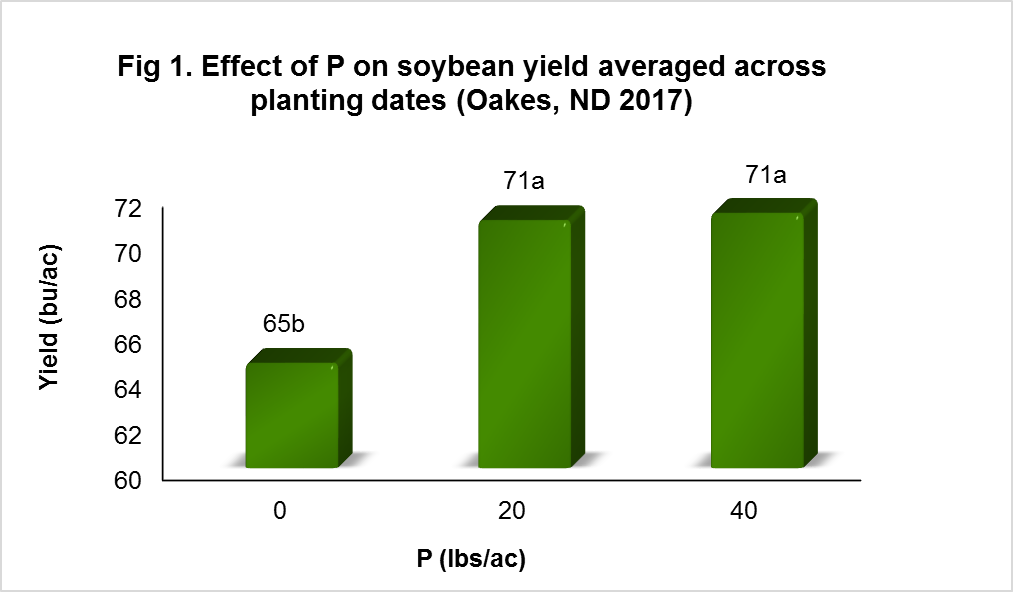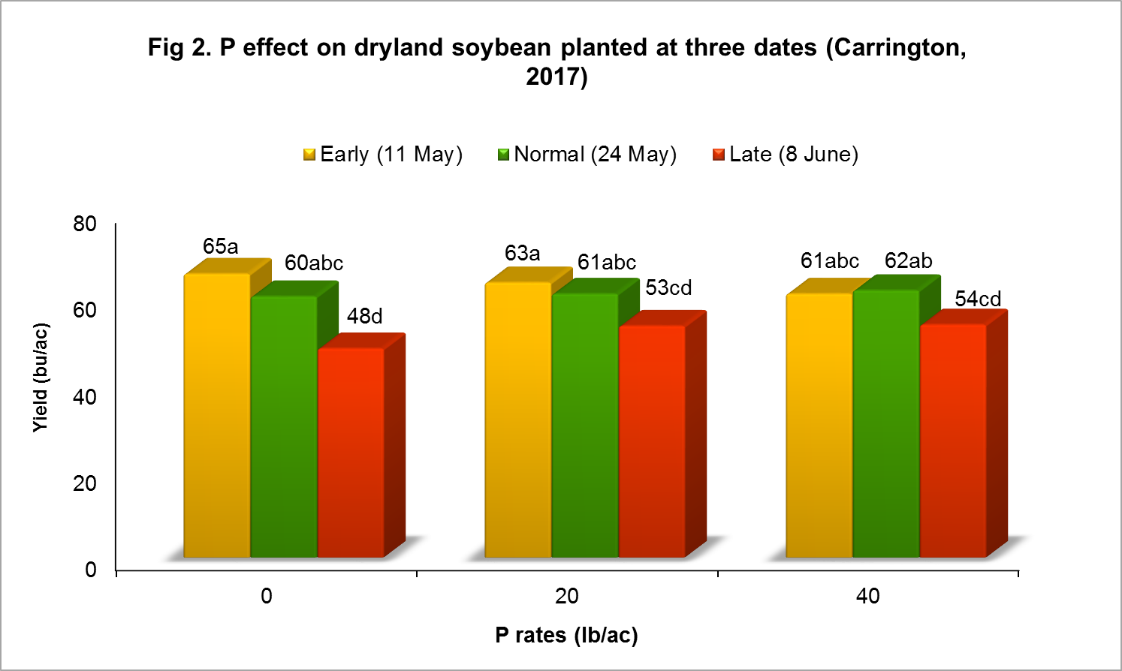Phosphorus Effect on Yield of Soybean Planted at Different Dates
Is planting date an important factor to consider when phosphorus (P) is applied to soybean?
Early planting of soybean in spring comes with frost risk, especially if planted too early when the soil temperature is <50°F. Phosphorus availability is low at this temperature. One study showed that plant P uptake at 60°F can be two to three times less than at 70°F.
The impact of P on soybean yield is not consistent. Crops sometimes overcome early P deficiency when the soil warms up later in spring and improves root uptake.
In 2017, a trial was set up at two locations to assess the effect of P rates at 20 and 40 lbs/ac plus a check (0 lbs P) on yield of soybean planted early, during normal planting at Oakes (two dates, irrigated), and late planting at Carrington (three dates, dryland).
Results
At Oakes (Irrigated soybeans, soil P test = high)
- P had significant effect on yields, resulting in 5-bushels increase (Figure 1) at either 20 or 40 lbs P
- Planting date had no significant influence on how soybean responded to P.
- Yields from early planting (71 bu/ac) were significantly greater than planting two weeks later (67 bu/ac).

At Carrington (Dryland, soil P test = 7 ppm)
- There was a planting date and P fertility treatment interaction effect. This means that the effect that P had on soybean yields varied by planting date (Figure 2).
- Yield loss from not planting early, as shown in Figure 2, was greater without P application than when P was applied. For example, at the check (0 lb P), yield loss was 5 bushels at normal planting on May 24, and 17 bushels when planting was late (June 8) compared to early planting.
- At the 20 lbs P level, yield loss was 2 bushels at normal planting, and 10 bushels at late planting when compared to early planting.

Conclusion
Early planted soybean (before May 17th) or normal planting (around May 17 to 24) will likely produce greater yields than planting anytime in June. Considering these results and other planting date studies in 2017 at Carrington, early planted soybean produced, on average, two bushels more than at normal planting date. Yields from the early planted late variety, MG-0.8, were better than when planted later. A major advantage for early planting, especially a later maturing variety at Carrington, is the longer growing time that allows crops to accumulate dry matter.
A summary of other soybean planting results by CREC researchers can be accessed at: https://www.ag.ndsu.edu/CarringtonREC/center-points/soybean-planting-date
Jasper M Teboh, Ph. D.
Jasper.Teboh@ndsu.edu
Research Soil Scientist
Acknowledgement: Thank you to the North Dakota Soybean Council for funding this research.


